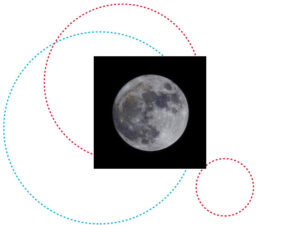As countries and companies worldwide reach advanced milestones in the new space race and prepare for future missions to the Moon, a number of technical aspects have yet to be defined.
Beyond the more immediate opportunities offered by the Low-Earth Orbit (LEO) economy, many actors – including Luxembourg – are looking at the possibilities of space resource utilisation. In fact, the country has positioned itself as a pioneer of the field, launching numerous initiatives to foster its development, even creating a unique regulatory framework for the use of space resources. The upcoming Space Resources Week conference, taking place on 19-22 April, will further explore the current technical and economic challenges the sector is facing.
While asteroid sample-return missions, such as JAXA’s Hayabusa2 and NASA’s OSIRIS-REx have recently made headlines, the most immediate testbed scenario for space resource utilisation will be the Moon. A number of missions taking place over the next few years, including those in the framework of NASA’s Artemis program, and ESA-Roscosmos’ Luna 27, will be looking at the possibilities of In-Situ Resource Utilisation (ISRU). This refers to the collection and processing of resources in-situ – in this case, on the Moon – to extract important raw materials, such as water, hydrogen, oxygen and helium-3.
Researchers at SnT have already been exploring some of the upcoming technical challenges raised by the exploration of our natural satellite. Some of those concern the localisation of resources, namely ice and inorganic soil (known as lunar regolith); others relate to lunar rovers and their positioning and mapping systems. In fact, researchers from the Space Robotics (SpaceR), the Remote Sensing Applications (RSA) and the Signal Processing and Communications (SIGCOM) groups will present six posters at the conference, showcasing some of their current projects in Space Systems and Resources.
One such project to be presented at Space Resources Week focuses on a very pressing problem for lunar expeditions: connectivity. How will future missions on the Moon communicate with each other, alongside ground stations on Earth? “Current typical communications in space are point-to-point, meaning they take place between two parties – like a telephone call. But in the upcoming lunar exploration scenarios, multiple crewed and uncrewed missions – including a large number of robots and rovers – will need to communicate with each other,” says Dr. Jorge Querol, Head of the SATCOM lab at SnT.
Relying on current practices for this kind of communication would be limiting and impractical at best, not to mention outright unsustainable with a large number of connected devices. For this reason, a group of 15 researchers across the SIGCOM, RSA and SpaceR research groups at SnT recently launched the 5G Space Communications Lab (5G-SpaceLab), an interdisciplinary, joint experimentation project to simulate 5G-based communications in space and on the Moon.
Leveraging the state-of-the-art space laboratories at SnT – the LunaLab, the Concurrent Design Facility, the CubeSat lab, and the SATCOM lab – the project simulates two kinds of scenarios: one to test Earth-orbiting satellite communications in view of the upcoming 5G standardisation of non-terrestrial networks (NTN) in satellite communications, the other to test Earth-Moon 5G-based communications.
As the next standard for satellite communications, offering greater bandwidth, extremely low latency and point-to-multipoint communication capabilities, 5G represents a great technology for communications on and from the Moon. In addition, “5G is perfectly suited to handle a large number of connected devices, and could even constitute a solution for interoperability between different systems and devices on the Moon,” says Querol, who coordinates the 5G-SpaceLab project, and will present it at Space Resources Week.
Having begun in September 2020, the project will emulate space and satellite communications, as well as lunar rover control and data collection, through different practical scenarios. These include direct communication between Earth and a lunar lander, communications via a lunar relay satellite, and the connectivity of a large number of rovers to a Moon-orbiting satellite constellation. To do so, the 5G-SpaceLab will reproduce to the highest possible degree the exact conditions of these environments, by introducing delay and making use of the advanced space facilities at SnT. As a practical example, as part of the Earth-Moon communication testing, the joint research team will be controlling rovers in the LunaLab via the emulated 5G network in the SatCom lab, directing operations from the Concurrent Design Facility (which serves as the project’s mission control room) using haptic control.
Overall, the two scenarios tested in the project are different aspects of the same problem. “At the end of the day, we will have to solve the same connectivity challenges on the Moon that we are solving with 5G on Earth, especially due to the current demand of bandwidth driven by the increasing number of connected devices and the Internet of Things” concludes Querol. It’s thanks to projects like the 5G-SpaceLab that countries and commercial ventures might soon be able to establish a presence on the Moon, as well as benefit from advanced satellite communication capabilities from the outset.
and Head of the SATCOM Lab and Head of the SATCOM Lab and Head of the SATCOM Lab SATCOM Lab and Head of the at SnT. He received his Ph.D. degree (Cum Laude) in Signal Processing and Communications from the Universitat Politècnica de Catalunya – BarcelonaTech (UPC) in 2018, with his dissertation winning the 2019 Ph.D. Thesis Award in Remote Sensing in Spain from the IEEE Geoscience and Remote Sensing Society (GRSS) Spanish Chapter. His research interests include Software Defined Radios (SDR), real-time signal processing, satellite communications, 5G non-terrestrial networks, satellite navigation, and remote sensing.
